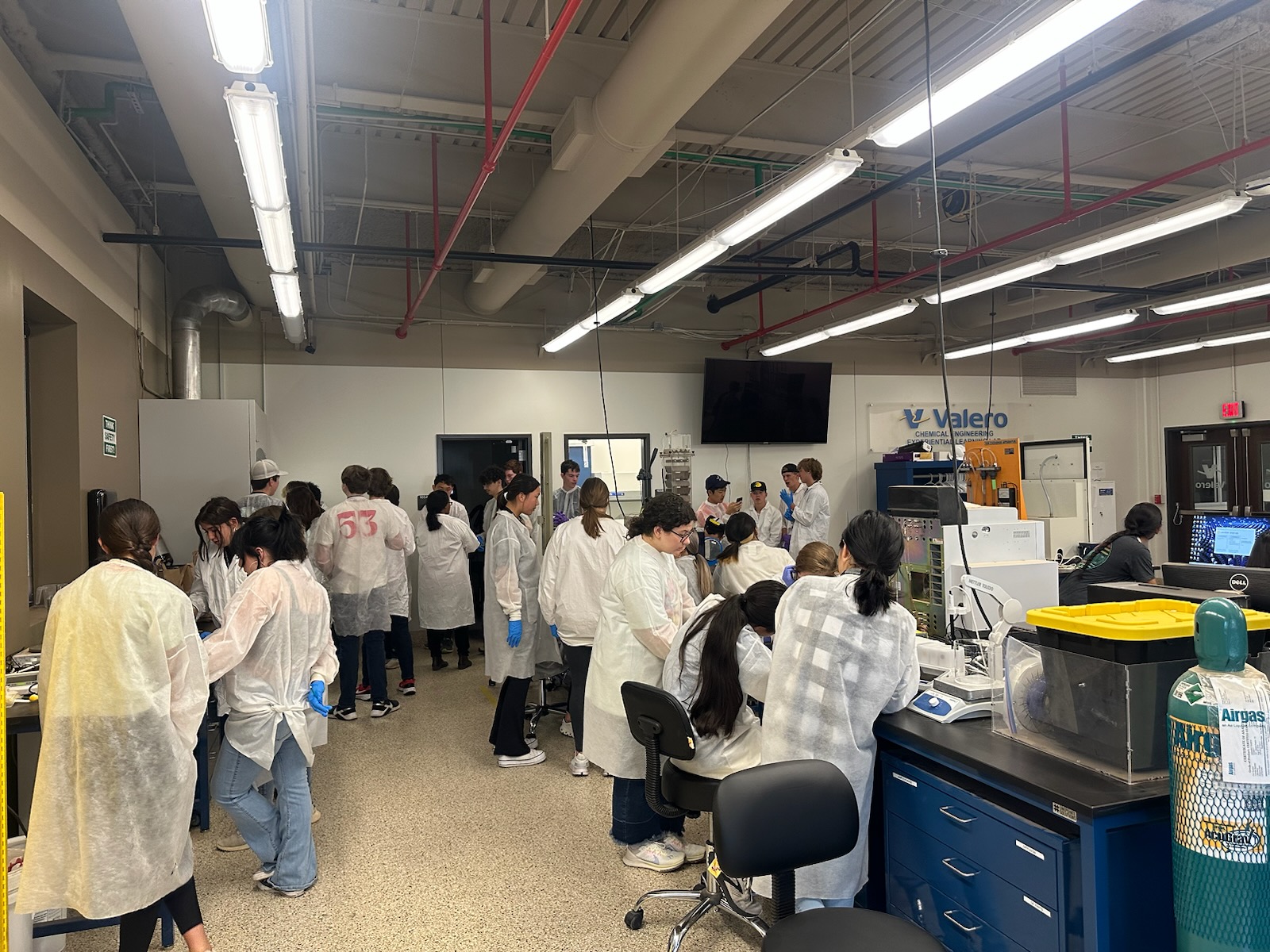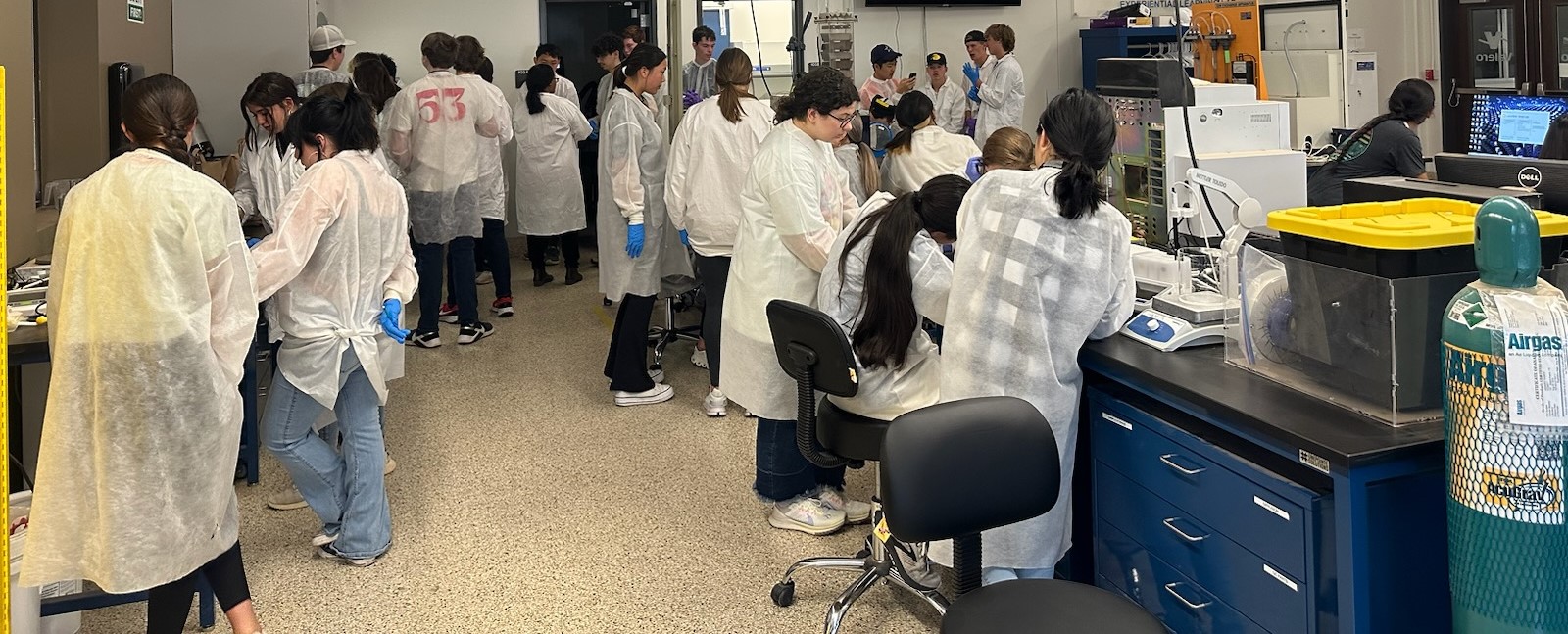
Texas high schoolers made the raw material for cement and concrete aggregate out of carbon dioxide, as part of a summer camp hosted by the chemical engineering department at Texas Tech University (TTU). Professor Tirhas Hailu of TTU led the camp using lessons developed by The Center for Learning with Nature, director Sam Stier, professor emeritus Donna Boggs, and Big Sky High School teacher Dave Jones. The lesson involves an innovative technology for making concrete out of atmospheric carbon dioxide rather than through mining and cooking limestone. Concrete manufacturing is the largest single-industry source of greenhouse gas emissions, releasing 8% of humankind’s GHGs each year. This alternative industrial approach was developed by Stanford professor Brent Constantz, inspired by how corals and other marine creatures make their tissues out of atmospheric CO2. Director Stier adapted the process so that it could be done in schools, using car exhaust, dry ice, or other forms of CO2. The lesson demonstrates to young people in a hands-on, engaging way that we can make an industrially important material like concrete in a way that benefits the environment, rather than harms it, much the same way as corals stabilize our climate while growing. The lesson is part of standards-aligned engineering and chemistry curricula that can show students humankind can become sustainable, and how bioinspired innovation can help.
To see the lesson plan, download the free middle/high school version of Engineering Inspired by Nature on the Learning With Nature website.
Image by Wondud Whibesilassie.





